At the beginning of May (of 2020), I received a box from Moychay . . .
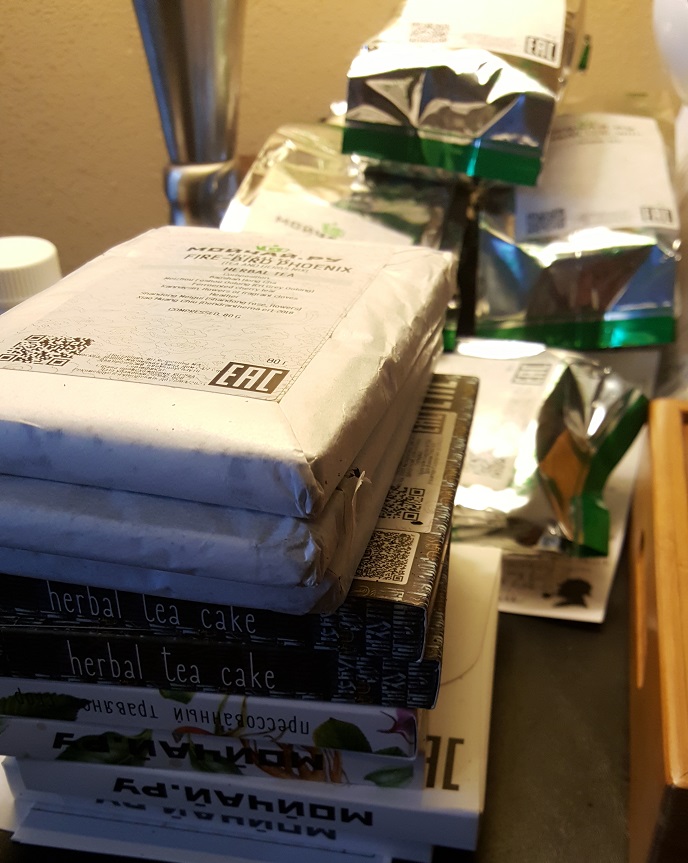
A blogger friend saw the write-up I did on Ivan Chai a couple of months prior, and recommended I get in contact with this Russian-based vendor. Apparently, they had a whole slew of Ivan Chai products, highlighting the many different ways the hearty herb could be processed. I’d mentioned I wanted to try it in as many ways as possible, and it appeared that Moychay was the place in Russia to go.
Short version: Ivan Chai—also known as fireweed or Rosebay Willowherb, depending on what side of the pond your on—is a weed with leaves that can be easily oxidized. Not only that, but—after oxidation—said leaves give off a pleasant aroma and taste pretty good, too. To date, I tried it in three forms: a semi-oxidized version with fireweed flowers in the fray, a dodgy fannings-grade “puerh” cake, and one that resembled a BOP-cut black tea. I liked ’em all, and I knew my journey with this weed wasn’t close to done.
Moychay is quite the big deal in Russia, from what little I gathered in a cursory online perusal. They had multiple chain stores in several cities around Russia, but their home base was in Moscow. It seemed only natural that a large operation such as that would have a corner on the Ivan Chai trade. The tisane wasn’t uncommon in the country. I got in touch with them in late-April expressing interest in some of their Ivan Chai wares.
What I didn’t expect was that they’d send me the whole lot. And over the course of a month, I played with them all. The U.S. was still under quarantine, I was unemployed with plenty of time on my hands, and I was jonesing for some Ivan Chai; whatever the form.
First up was a smoked variety.
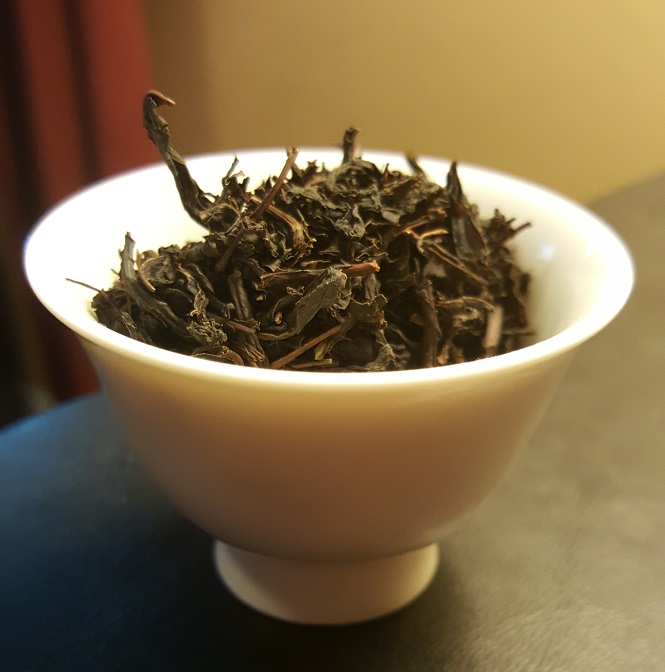
A fruit-smoked variety, to be precise. I wasn’t sure what they meant by “fruit-smoked”, but I had my guesses. Either they used wood from fruit trees, or smoked the rinds of fruits to create the desired affect. I half-expected something that tasted like well-done sirloin, like half of the smoked black teas I’ve imbibed over the years. Not the case!
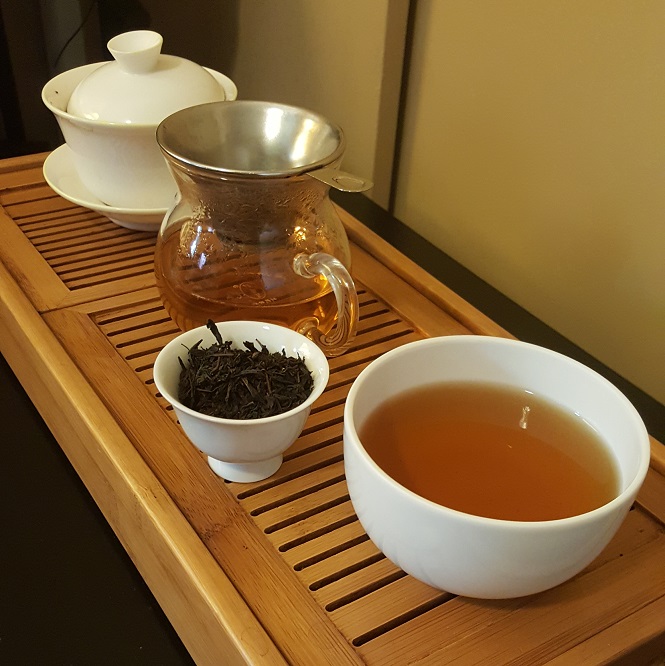
It brewed up dark, like the other “black tea”-ish Ivan I had months ago, but the aroma was subtly smoky; not overpowering. If there was a fruit lean to the smokiness, I didn’t quite find it amidst the natural honey-cum-tart notes of the Ivan Chai leaves themselves. The drink was smooth, soft in texture, with an ember-like finish.
But that wasn’t the only smoked version I tried; oooooh no.
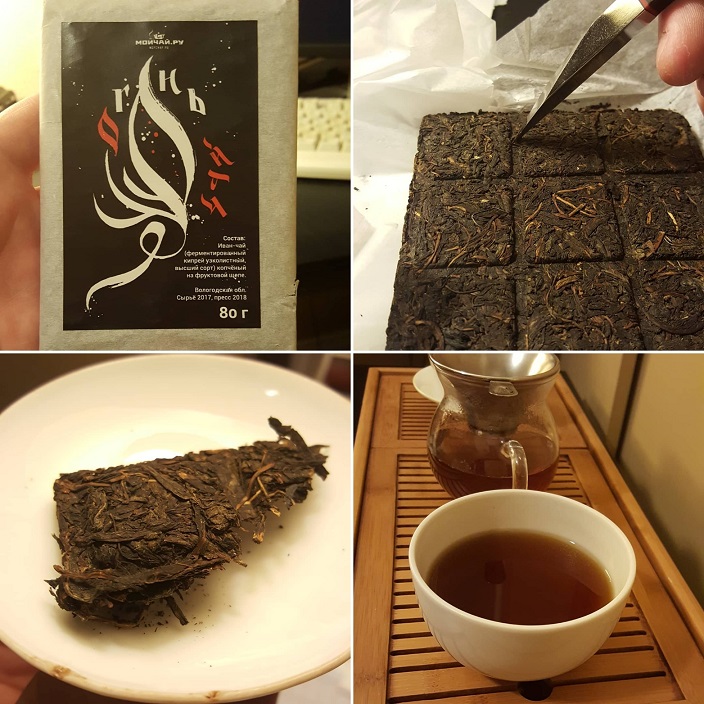
According to their product info, this “Fire Tea” fang cha (square tea) style offering hailed from the Vologda region. The Ivan Chai leaves were oxidized, rolled, cut, smoked over “fruity wood” (in 2017), and then steamed/pressed into a briquette form (in 2018). Well, that answered a few questions about the first version I tried. So this was its pressed sibling, so-to-speak.
First time I dipped into it, I brewed half a square, which was . . . way too much. According to the description, one square was good for 500ml of water. I was brewing out of a 150ml gaiwan. On future attempts, I used only a third of a cube. Even then, it still yielded a dark brew with a deceptively soft, fruity-honey taste. Oh, and it lasted for multiple short infusions; gongfool style.
The third one I notched off was actually the one I was most excited about.
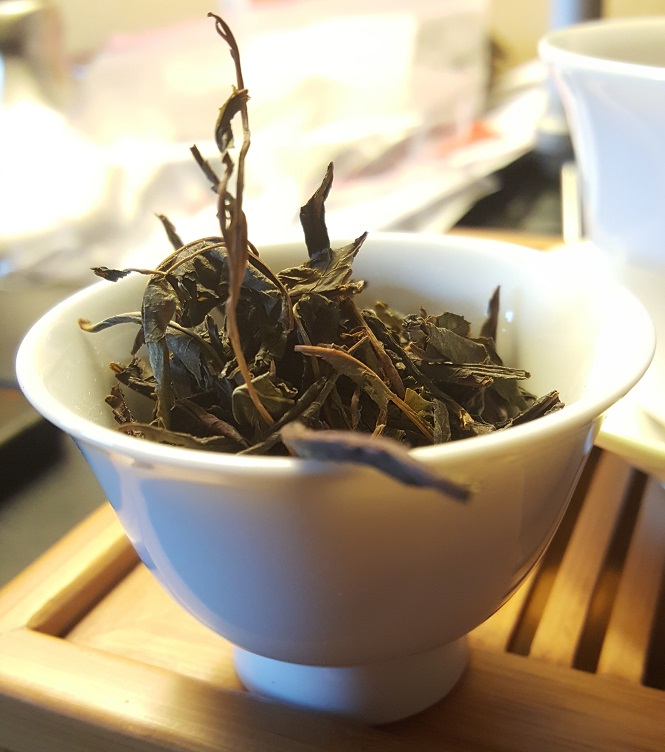
Ivan Chai as a green tea. Instead of oxidizing the leaves, as was the norm, this version underwent a kill-green phase—similar to a Chinese green tea. It was manufactured in the Ivanovo region, and the leaves were from the summer 2019 growing season. As to the method of kill-greening used, product notes mentioned it was “roasted” according to Chinese methods. I took that to mean something akin to pan-frying.
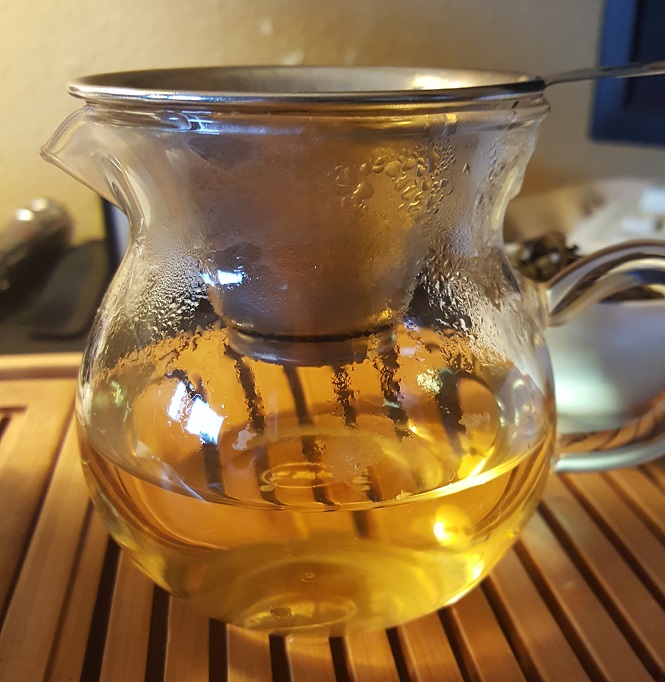
It took me several tries to find a brewing style that worked best for this. Like a sencha or Vietnamese green, it was extremely sensitive to higher temperature water and longer steep times. The sweet spot for my palate was a brew temp of 165F, and a steep of two minutes; like a deep-steamed sencha, almost. Anything more than that, and it tasted like over-brewed nettle leaf. Done right, and it mimicked a middle-of-the-road Chinese green quite well. Albeit with a little more kick.
The fourth version was my first blend of the bunch.
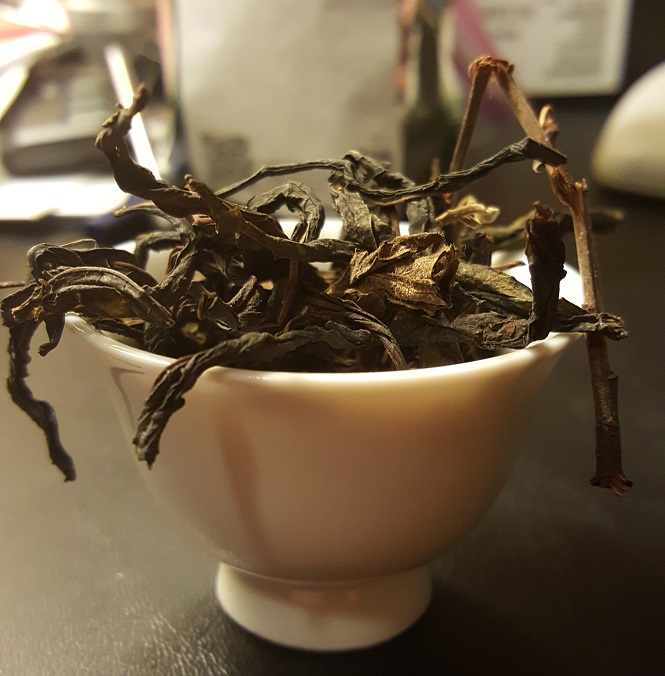
Large leaf Ivan Chai blended with oxidized hazel leaf.
Both leaf materials hailed from summer 2019 stock, and both were fully oxidized like a black tea. Right off the bat, just from smelling it, I knew I was in for something completely different. It smelled like a pungent maple forest in bloom during the spring. Ivan Chai’s natural aromatics were heavily subdued by whatever nasal dance the hazel leaf did. There was a tanginess to the aroma I couldn’t quite place, but it reminded me of church camp, for some reason. Maybe it was the forest-like aroma. I likened the dry leaf smell to tree sap.
Like the green tea version, this was also a difficult one to peg a perfect brewing approach for.
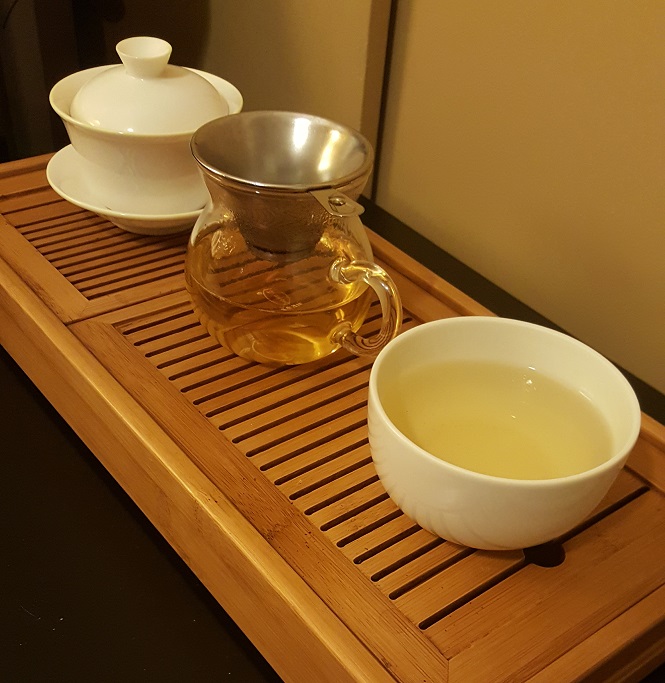
Brewed western style (i.e boiled water, three-plus-minute steep), the pungent maple-sap lean carried through in the taste in an almost overpowering way. Lowering the temp on the water lessened the body of the brew. Eventually, I settled on a good ol’ gong fu approach; more leaf, less (boiled) water, less time. And it held up to that perfectly. A balance of the hazel leaf’s palatial delivery, and the far subtler Ivan Chai contribution, was achieved.
Eventually, I swerved back into fang cha land with a briquette blend that took Ivan Chai and mixed it with actual tea tea. In this case, Da Hong Pao. Why anyone would use Da Hong Pao as blending material, I dunno . . . but I dig that kind of experimentation!
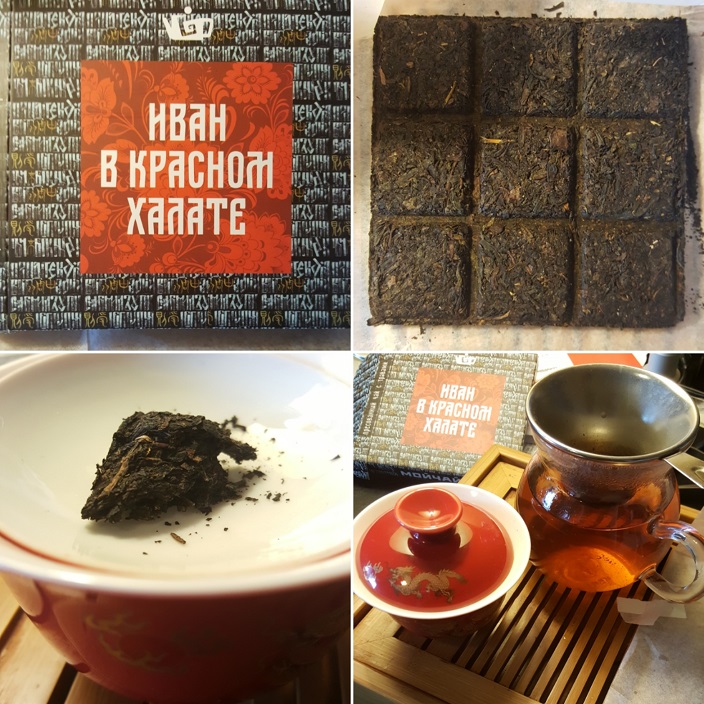
I’m not going to mince words; I absolutely loved this. It smelled like roasted honeycomb, and it tasted about the same, too. Ivan Chai smoothed out the “cliffy” lean of the Da Hong Pao, and the yancha bend gave the Russian herb some added depth. If I had one nitpick it’s that the leaves were pulverized to fannings before being pressed. It made prying them apart a messy affair. But once brewed, all annoyance was quickly forgotten. An incredible blend.
As I was preparing for this drinking diary, I thought I’d tried all the Ivan Chai offerings in the box. The rest were fangs that were tea blended with other weird herbs. Two of them, I couldn’t drink. (Thanks, allergies.) But before I put fingers to keyboard to type all this up, I re-examined one of the fangs . . . 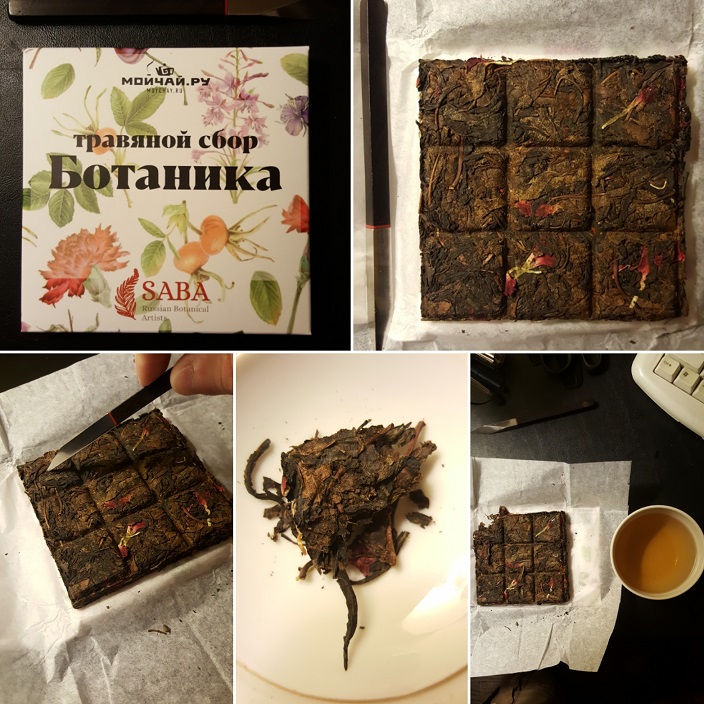
The briquette was called “Botanica“, and for good reason. The blend consisted of Turkish carnations, rosehips, oxidized cherry leaf, and—you guessed it—Ivan Chai. The Ivan part of the blend hailed from the Tver region.
Like the other fangs, this held up to several different brewing approaches, but the one it faired best at was a gongfoolish approach with water heated to about 185F. Reason being, the oxidized cherry leaf and carnations imparted a cloying bitterness if over-brewed. Done just under a boil with shorter steeps, and it tasted like having dessert in an herbarium.
And speaking of Tver region Ivan Chai . . .
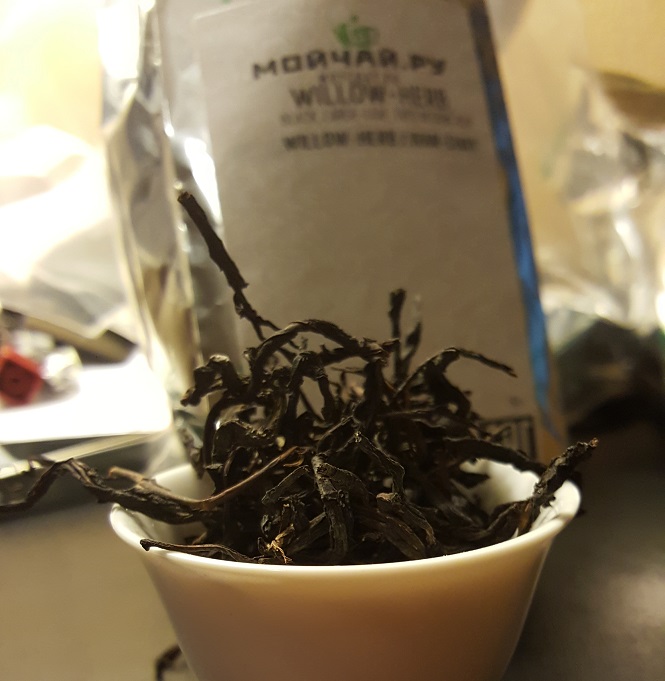
I had a couple of high-grade versions from that region as well. But that’s another long story for another time. For now, I’m satisfied with how much I was able to explore with this weird, wonderful herb in my cup.
For Moychay’s Ivan Chai product listings, go HERE.
Leave a Reply